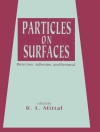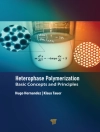Recent advances into the wear of advanced materials
In general, wear is currently defined as ‘the progressive
loss of material from the operating surface of a body occurring as
a result of relative motion at the surface’. It is related to
surface interactions and more specifically to the form of contact
due to relative motion. Wear is rarely catastrophic but does reduce
the operating efficiency of machine components and
structures. At this time of economic crisis, this is a very
important field of study because of the huge impact the wear of
materials has on the economy.
The purpose of this book is to present a collection of examples
illustrating the state of the art and research developments into
the wear of advanced materials in several applications.
It can be used as a research book for a final undergraduate
engineering course (for example into materials, mechanics, etc.) or
as the focus of the effect of wear on advanced materials at a
postgraduate level. It can also serve as a useful reference for
academics, biomaterials researchers, mechanical and materials
engineers, and professionals in related spheres working with
tribology and advanced materials.
Jadual kandungan
Preface xi
Chapter 1. Carbon Fabric-reinforced Polymer Composites and
Parameters Controlling Tribological Performance 1
Jayashree BIJWE and Mohit SHARMA
1.1. Introduction to polymeric tribo-composites 3
1.2. Carbon fibers as reinforcement 6
1.3. Carbon fabric-reinforced composites 12
1.4. Tribo-performance of CFRCs: influential parameters 15
1.5. Concluding remarks 46
1.6. Bibliography 50
A1.1. Appendix I: Various techniques for developing CFRCs by
compression molding 54
A2. Appendix II: Characterization methods for CFRCs
57
Chapter 2. Adhesive Wear Characteristics of Natural
Fiber-reinforced Composites 61
Belal F. YOUSIF
2.1. Introduction 62
2.2. Preparation of polyester composites 67
2.3. Specifications of the fibers and composites 70
2.4. Tribo-experimental details 76
2.5. Summary 93
2.6. Bibliography 94
Chapter 3. Resistance to Cavitation Erosion: Material
Selection 99
Jinjun LU, Zhen LI, Xue GONG, Jiesheng HAN and Junhu MENG
3.1. Cavitation erosion of materials – a brief review
99
3.2. Measuring the wear resistance of a material to cavitation
erosionby using a vibratory cavitation erosion apparatus 101
3.3. Material selection 108
3.4. Conclusion 115
3.5. Acknowledgement 116
3.6. Bibliography 116
Chapter 4. Cavitation of Biofuel Applied in the Injection
Nozzles of Diesel Engines 119
Hengzhou WO, Xianguo HU, Hu WANG and Yufu XU
4.1. Introduction 120
4.2. General understanding of cavitation erosion 122
4.3. Hydraulic characteristics of cavitation flow 131
4.4. Influence of fuel property on cavitation 139
4.5. Cavitation erosion of biofuel in the diesel injection
nozzle 146
4.6. Conclusion 155
4.7. Acknowledgments 156
4.8. Bibliography 157
Chapter 5. Wear and Corrosion Damage of Medical-grade Metals
and Alloys 163
Jae-Joong RYU and Pranav SHROTRIYA
5.1. Introduction 164
5.2. Clinical studies and mechanistic investigation into implant
failure 173
5.3. Residual stress development by rough surface contact
184
5.4. Conclusion 192
5.5. Bibliography 193
List of Authors 197
Index 201
Mengenai Pengarang
J. Paulo Davim is Professor, Department of Mechanical Engineering at University of Aveiro, Portugal.












